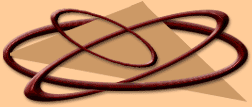|
Name_______________________________ Date________________
ORIGINS OF MODERN DANCE
BEFORE
READING: Do your best to answer the following questions.
1. List three pioneers of modern dance.
2.
In what century did modern dance originate?
3. What conventional restrictions were placed on women in the 19th century?
DURING READING:
1. As you read, review the questions and adjust your answers.
2. Highlight anything
in the article that is of particular interest to you.
AFTER READING:
1. Discuss the answers to the
questions.
2. Discuss interesting points in the article
3. Isadora Duncan, Martha Graham, Jose Limon, Katherine Dunham
(Begin to organize biography section of your notebook)
4. Modern dance video.
5. Exit question: What was the most
interesting thing you learned today?
The Origins of Modern Dance
Dateline: 11/17/97
Around the turn of the century, a great many changes were taking
place in the arts. Excited by the many new discoveries in science and psychology, many artists began to explore their work
in a new way. In painting, cubism presented objects seen simultaneously from several points of view. Composers were also discovering
new sounds and structures in music. The Ballets Russes was breathing life into the art of classical dance which had decayed
into an empty show of technique.
In America a small group of women pioneers decided to make an artistic statement with
their dance, and in doing so, gave a new form to dance in the twentieth century. It wasn't an easy battle. The condition of
women in the 19th century was constricted by convention. Most women received no physical education. Long heavy skirts and
corsets restricted their movements. In America there were no professional dance companies. Serious artists such as Loie Fuller,
who wanted to be dancers had to work in vaudeville or reviews, or go to Europe to receive recognition. Yet in the short space
of twenty years, Isadora Duncan and Ruth St. Denis became international stars of the new dance movement. How did it come about?
In the mid 18th century, a French singer named Delsarte started studying the relationship between movement and emotion.
He established a catalog of gestures corresponding to various emotional states, which he presented publicly in 1867 at the
Facult de Medecine in Paris. His theories quickly became popular with singers, actors, and dancers. He believed that the entire
body, especially the torso, must be mobilized in movement and that expression comes from muscular tension and it's release.
By 1870, translations of his theories began to appear in the United States, and progressive Americans quickly adopted
his gymnastic exercises as a means of striving for spiritual perfection. A new generation of dancers all studied his technique.
Isadora Duncan has become a symbol of female emancipation. She rejected the corset and danced barefoot wearing a Greek
tunic. Inspired by the simplicity of classical Greek art, she sought a dance of natural movements and rhythms. Using the music
of classical composers such as Beethoven and Tchaikovsky, many of her dances concerned social protest. Her work was continued
after her death by her students but interest in it has declined. Today it is continued only by small groups.
Ruth St.
Denis on the other hand, was more attracted to Oriental mysticism and was inspired to create Indian temple dances. While not
historically accurate, they were filled with great inner emotion. In 1914 she met Ted Shawn, who became her partner and whom
she later married. He brought a measure of balance to the until then feminist dance movement. Together they founded the Denishawn
school in 1915. The curriculum included ballet (on demi-pointe), ethnic and folk dance, Dalcroze eurythmics, Delsarte exercises
and yoga.
Next week we'll look at the generation of dancers that included Martha Graham and their effort to escape from
the tradition of DenisShawn.
Retrieved from the World Wide Web September 4, 2001
|
